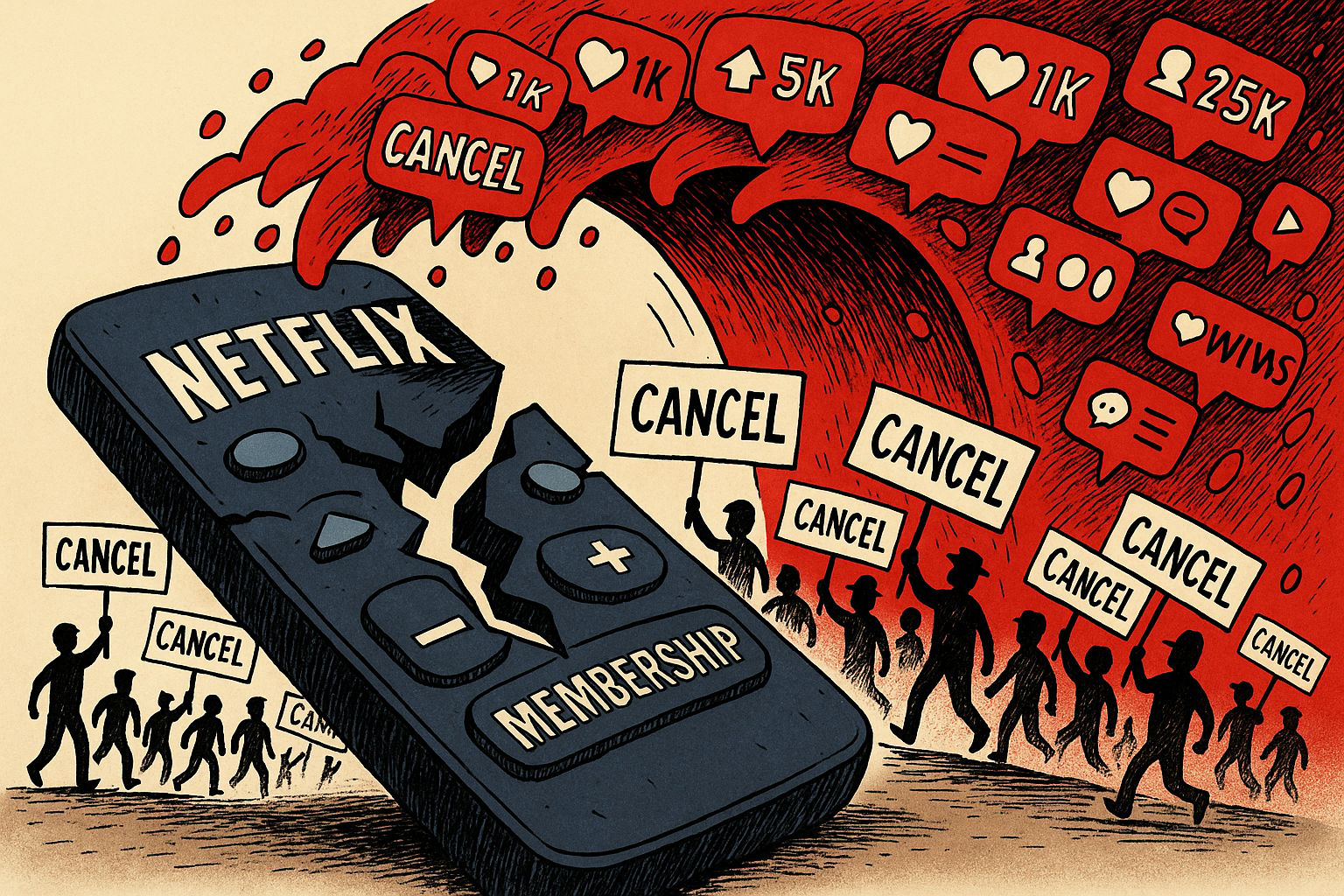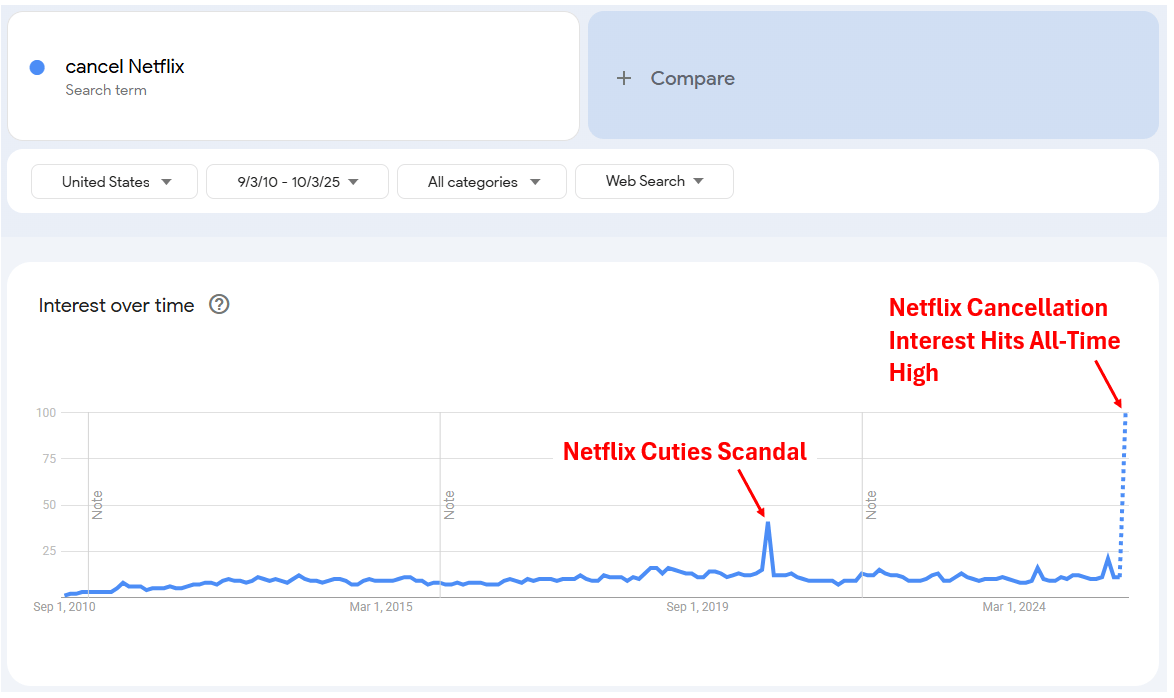Netflix's $20 Billion Problem: The Churn Crisis Nobody Saw Coming
Netflix (NFLX) Deep Dive: Should investors be worried about Netflix churn ahead of earnings? Here's what you need to know...

Netflix (NFLX) Has a Major Problem
In September 2020, Netflix faced a reputational storm when the French film Cuties sparked the largest churn surge in its history. Cancellation mentions spiked to five to eight times normal daily levels, with traffic to Netflix’s cancellation page up nearly 200%.

Social media analysis from X (formerly Twitter) during that period reveals the intensity: users posted viral calls to action, sharing screenshots of cancellations and decrying the film as "child exploitation" or "grooming," with hashtags like #CancelNetflix trending. Influencers and media amplified the outrage, but engagement was moderate—top posts garnered 1K-5K likes, and the controversy faded within days as subscriptions rebounded.
Yet the impact was short-lived.
International subscriber growth, which accounted for 80% of Netflix’s gains that year, offset the U.S. cancellations. Netflix ended 2020 with 26 million new subs in the first half alone and shares closing the year higher.
Critically, the pullback in NFLX stock was fleeting: shares dipped mid-September amid the headlines but finished the month nearly flat, reflecting investor confidence in the company's broader momentum.
Today’s situation looks very different—and X sentiment analysis highlights just how amplified the backlash has become.
This time, the churn crisis could lead to a far more prolonged and damaging pullback in NFLX stock, given the lack of offsetting user growth factors and heightened market scrutiny.
LikeFolio data shows cancellation searches now running more than double the Cuties peak, and this time the surge is concentrated in Netflix’s core U.S. and Canada (UCAN) region.

On X, the current wave—sparked by accusations of graphic or "indoctrinating" content in children's shows like Dead End: Paranormal Park, Strawberry Shortcake: Berry in the Big City, and The Baby-Sitters Club (rated for young audiences)—has exploded in virality.

Users frame these as promoting transgender themes, pronouns, and cross-dressing, labeling it "grooming" or a "trans agenda." High-profile endorsements, such as Elon Musk's post urging "Cancel Netflix for the health of your kids" (garnering 992K likes and 89M views), have propelled the movement far beyond 2020 levels. Other influencers like Libs of TikTok (128K likes) and Benny Johnson have shared threads with millions of views, often referencing Cuties as a prior red flag and tying the issue to broader "woke ideology."
Engagement metrics are staggering: individual posts exceed 100K likes and 10M views, with reports of "mass cancellations" and a $15-20B market value loss. Even congressional scrutiny, with figures like Rep. Tim Burchett calling for hearings on Netflix executives, adds a political dimension absent in 2020.
This matters because UCAN is Netflix’s most profitable geography. In 2024, UCAN contributed $17.36B in revenue with the highest ARPU globally at $17.20 per subscriber, far above EMEA ($10.80), LATAM ($8.28), and APAC ($7.17). That means losses here carry far more financial weight than in lower-ARPU markets.
Equally important: UCAN subscriber growth was already slowing before this spike.
In Q3 2024, the region added only 0.69 million net subscribers, down sharply from 1.75 million in the prior year’s quarter. In 2022, UCAN even posted net subscriber losses, underscoring market saturation. Netflix itself has acknowledged the issue, announcing it would stop reporting subscriber counts in 2025, telling investors to focus on revenue and margins instead.
That decision reduces transparency exactly when churn signals are flashing red—and when X data shows users not just outraged over specific content but linking it to ongoing frustrations like pricing hikes, ad-tier rollouts, password crackdowns, and "content fatigue."
When the Cuties scandal erupted, NFLX shares pulled back but finished the year higher.
This time could be different – here’s why: